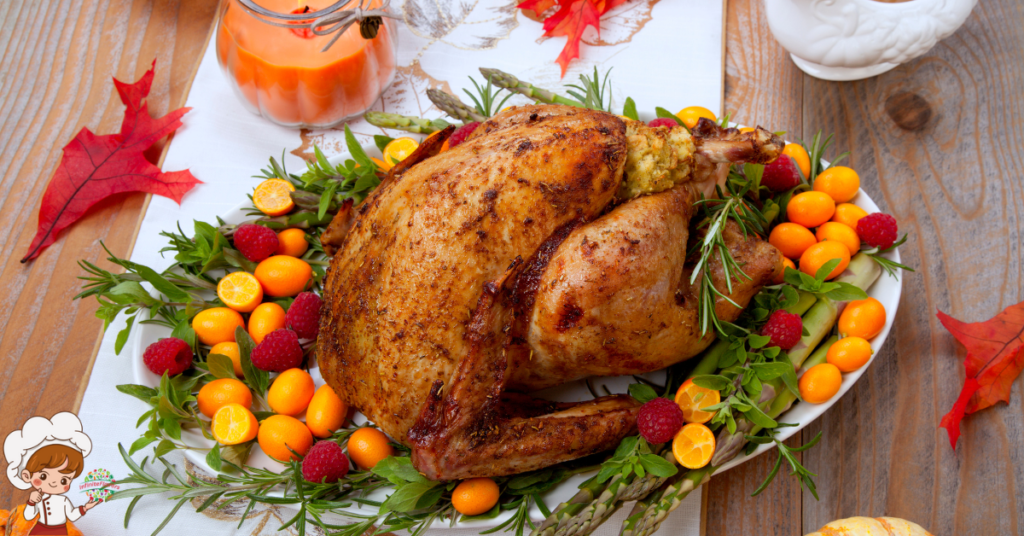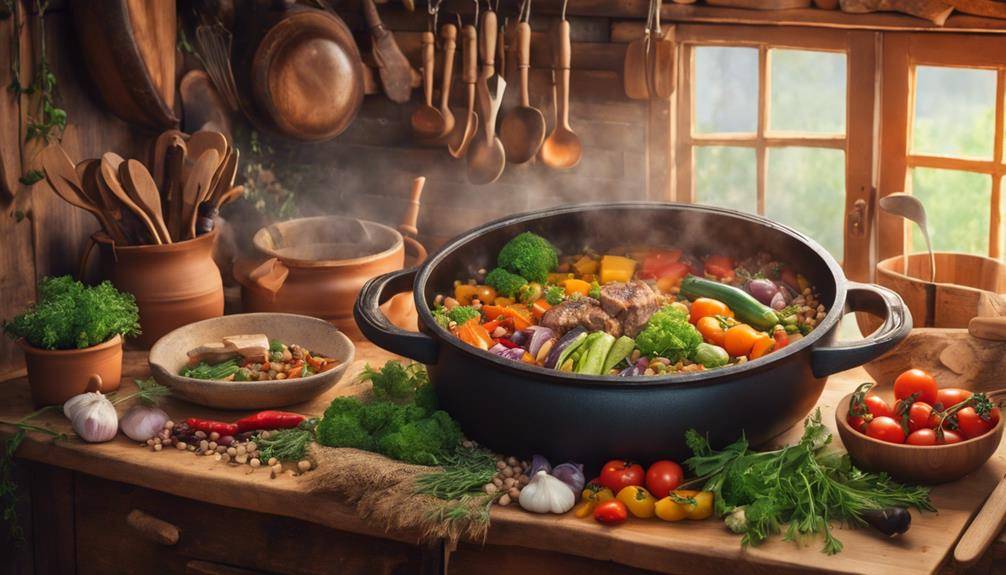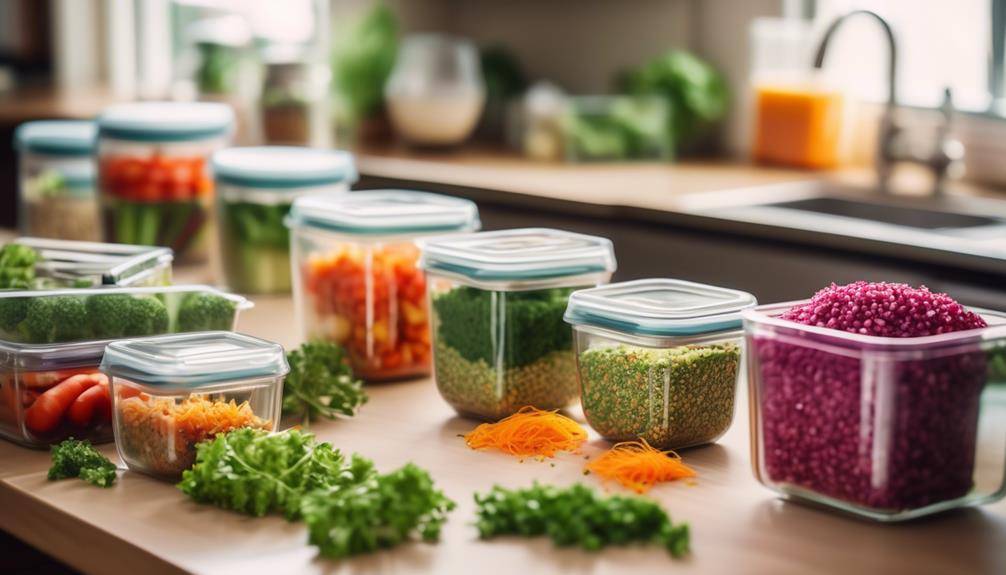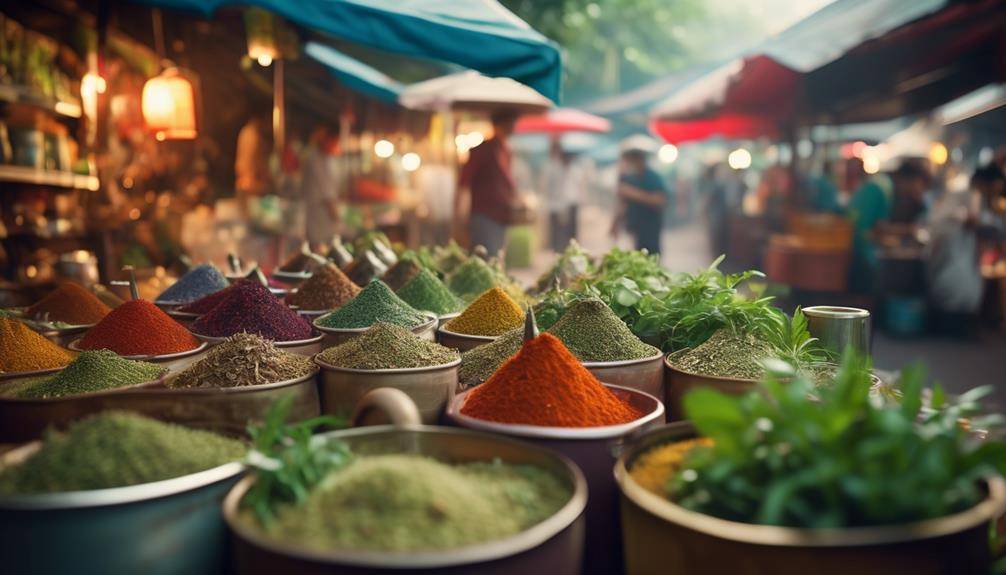The Best Braising Tips For A Juicy Turkey

The Best Braising Tips For A Juicy Turkey; Braising your turkey is a surefire way to guarantee it’s juicy and packed with flavor. Start by searing the turkey in a heavy pot to lock in those precious juices. Use rich broth or wine, keeping the turkey partially submerged, and add aromatic vegetables like onions and garlic for depth. Monitor the cooking temperature, aiming for 165°F, and remember to let it rest afterward to redistribute the juices. For even more tips on selecting the best turkey and the perfect cooking techniques, keep exploring!
Understanding Braising Basics
Braising is a fantastic cooking method that combines both moist and dry heat to create tender, flavorful turkey dishes. You’ll find that braising methods typically involve searing the turkey first, which locks in those essential juices and enhances the overall flavor development. This initial step is essential, as it creates a beautiful caramelization on the surface of the meat, adding depth to your dish.
Once you’ve seared the turkey, you’ll need to incorporate a flavorful liquid, such as broth or wine, into the pot. The key is to keep the turkey partially submerged, allowing the moisture to penetrate the meat as it cooks slowly. This method not only keeps the turkey juicy but also infuses it with the rich flavors of the braising liquid. As you simmer the turkey over low heat, the collagen in the meat breaks down, resulting in a succulent texture that practically falls off the bone.
Don’t forget to add aromatics like onions, garlic, and herbs to the braising liquid; they’ll enhance the flavor development and elevate your dish. You can also experiment with different spices and ingredients to create a unique flavor profile that suits your taste. Remember, patience is essential with braising. The longer you allow the turkey to cook, the more tender and flavorful it’ll become. Embrace this method, and you’ll be rewarded with a delicious turkey experience that will impress everyone at your table.
Choosing the Right Turkey
Selecting the right turkey is essential for a successful braising experience. When you’re choosing your turkey, take into account the breed and size to guarantee you achieve the best flavors and textures in your dish. Heritage breeds, for example, are often recommended for braising due to their rich taste and firm texture. These turkeys have been raised in traditional ways, allowing them to develop more flavor compared to conventional breeds.
When it comes to turkey size, think about the number of people you’re serving and how much meat you want. A smaller turkey, around 12 to 14 pounds, can be easier to manage in a braising pot, while larger turkeys may require more cooking time. If you’re cooking for a crowd, a larger bird might be necessary, but keep in mind that larger turkeys can sometimes be drier if not cooked properly.
Another factor to take into account is how the turkey was raised. Look for pasture-raised or free-range options, as they often yield better flavor and moisture. It’s also worth checking the label for any added hormones or antibiotics, as this can impact flavor and quality.
Ultimately, whether you choose a heritage breed or a conventional turkey, make sure to select a bird that feels right for your braising method. This thoughtful choice will set the stage for a succulent, flavorful meal that’s sure to impress.
Preparing the Turkey
Now that you’ve chosen the right turkey, it’s time to prepare it for braising. You’ll want to focus on essential marinade ingredients that will enhance the flavors and tenderize the meat. Let’s explore how to get your turkey ready for a delicious braising experience.
Choosing the Right Turkey
When it comes to choosing the right turkey for braising, you want to narrow down your options based on size, quality, and type. Start by considering turkey size. A larger turkey, typically between 12 to 16 pounds, provides ample meat and is ideal for braising. This size allows for even cooking and plenty of leftovers, which is always a bonus.
Next, look into the quality of the turkey. Opt for fresh, free-range, or organic birds whenever possible. These turkeys are often more flavorful and juicy, making them perfect for the slow cooking process of braising.
Don’t overlook heritage breeds, either. These turkeys are known for their rich flavor and texture, which can elevate your dish. Heritage breeds tend to have more marbling, resulting in a moister turkey after braising.
Essential Marinade Ingredients
What ingredients should you include in your marinade to guarantee your turkey turns out succulent and flavorful? Start by focusing on the right acid balance. Using ingredients like vinegar or citrus juice helps tenderize the meat while enhancing flavor. For a zesty kick, don’t forget to add citrus zest; it brightens up the whole dish.
Next, consider your herb combinations. Fresh herbs like rosemary, thyme, and sage work wonders for flavor infusion. Pair these with your favorite spice selection—think paprika, garlic powder, or even a hint of cayenne for some heat.
You’ll also want to incorporate sweet elements like honey or brown sugar. These not only add depth but also help create a beautiful caramelization during cooking. Additionally, don’t overlook umami sources such as soy sauce or miso paste; they elevate the savoriness of the turkey.
Selecting Flavorful Liquids
When braising turkey, the liquids you choose can make all the difference in flavor. Consider using rich broths or stocks, and don’t overlook the potential of wine and spirits to enhance your dish. Aromatic vegetable juices can also add a unique twist, so think about what will complement your turkey best.
Broths and Stocks
Selecting the right broth or stock is essential for elevating the flavor of your braised turkey. Start by considering different broth types, such as chicken, vegetable, or turkey broth. Each brings its unique flavor profile, so choose one that complements your turkey and the other ingredients you’re using. A rich, homemade turkey broth can make a significant difference, but store-bought options can work in a pinch.
When it comes to stock ratios, aim for a balance that enhances without overpowering. A good rule of thumb is to use about two cups of broth for every cup of liquid you plan to add. This guarantees your turkey stays moist while absorbing the delicious flavors from the broth. If you want a deeper flavor, consider mixing broths—like combining chicken and vegetable broth.
Don’t forget to add aromatics like onions, garlic, and herbs to your broth or stock; they’ll infuse even more flavor into your turkey. By carefully selecting and balancing your broths and stocks, you’ll create a braised turkey that’s juicy and bursting with taste.
Wine and Spirits
Incorporating wine or spirits into your braising liquid can elevate the overall flavor of your turkey, adding depth and complexity. When selecting your wine pairings, consider a full-bodied red like Cabernet Sauvignon or a white like Chardonnay. These options can enhance the savory notes of the turkey while complementing any herbs or spices you use.
If you prefer spirits, a splash of bourbon or brandy can impart a rich sweetness that pairs beautifully with the meat. Just remember: a little goes a long way. You don’t want the alcohol to overpower the natural flavors of the turkey.
When choosing your liquid, think about the overall flavor profile you want to achieve. If you’re going for a more savory dish, stick with darker wines or spirits. For a lighter touch, opt for white wine or a clear spirit like gin or vodka.
Ultimately, your selections should reflect your personal taste. Experimenting with different wine and spirit combinations can lead to delicious discoveries, so don’t hesitate to mix and match until you find your perfect blend. Happy braising!
Aromatic Vegetable Juices
Aromatic vegetable juices can transform your turkey braise into a flavor-packed masterpiece. When selecting flavorful liquids to braise your turkey, consider using freshly made juices from a mix of vegetables. Carrots, celery, and onions form a classic base, lending sweetness and depth to your dish. You can enhance this foundation with garlic or leeks for added complexity.
Don’t forget to experiment with herb combinations to elevate the taste. Fresh rosemary, thyme, or sage can infuse your vegetable juices with a fragrant essence that complements the turkey beautifully. Try blending these herbs into your juice for an even distribution of flavor.
For vegetable pairings, think about seasonal produce. Adding tomatoes can introduce acidity, while bell peppers can provide a subtle sweetness. You can also experiment with root vegetables like parsnips or turnips, which can add an earthy note.
Ultimately, the key is to balance the flavors. Mix and match your vegetable juices and herbs until you find the perfect combination that excites your palate. With the right aromatic vegetable juices, your turkey will be juicy and bursting with flavor.
Perfecting the Cooking Technique
Perfecting the cooking technique for braising turkey is all about balancing moisture and flavor. To achieve that perfect balance, start with effective browning techniques. Browning the turkey before braising enhances its flavor and creates a rich, golden crust. Use a heavy-bottomed pot and heat oil over medium-high heat. Once the oil shimmers, carefully place your turkey in the pot. Don’t overcrowd it; you want to sear each piece evenly. Allow the turkey to brown on all sides, which should take about 10-12 minutes. This caramelization adds depth to your dish that’ll keep everyone coming back for seconds.
After browning, it’s time to introduce moisture. Add your aromatic vegetable juices and enough liquid to cover about one-third of the turkey. This’ll help keep your meat moist during the cooking process. Cover the pot with a lid and let it gently simmer on low heat.
Resting time is essential too. Once your turkey is braised to perfection, remove it from the pot and let it rest for at least 20 minutes. This step allows the juices to redistribute throughout the meat, ensuring every bite is tender and flavorful.
Monitoring Temperature and Time
Precision in monitoring temperature and time is essential for achieving perfectly braised turkey. To guarantee your turkey turns out juicy and tender, you need to follow specific temperature guidelines throughout the cooking process. Start by preheating your oven to the appropriate temperature, usually around 325°F. This consistent heat will allow the turkey to cook evenly and absorb all the flavors of the braising liquid.
Next, keep an eye on the internal temperature. For turkey, the ideal target is 165°F in the thickest part of the breast and thigh. Using a meat thermometer is the best way to monitor this. Insert it without touching the bone, as this can give you a false reading. Remember, you should always let the turkey rest after removing it from the oven, as the internal temperature will continue to rise slightly during this resting period.
Cooking duration is equally important. Depending on the size of your turkey, the braising process can take several hours. A general guideline is about 20-25 minutes per pound. Be sure to adjust your cooking time based on whether your turkey is stuffed or unstuffed, as stuffed turkeys may require a bit more time to reach the desired temperature.
Serving and Presentation Tips
When it comes to serving your braised turkey, presentation plays a key role in creating an inviting meal. A beautiful platter presentation can elevate your dish and impress your guests. Start by carefully transferring the turkey onto a large serving platter. Use a sharp knife to carve the turkey into even slices, showcasing that juicy meat.
Next, consider your garnishing options. Fresh herbs like rosemary, thyme, or parsley can add a pop of color and a fragrant aroma. Scatter some around the turkey to enhance the visual appeal. You might also add seasonal vegetables, such as roasted carrots or Brussels sprouts, to fill out the platter and provide a vibrant contrast.
Don’t forget about the sauce! Drizzle some of the braising liquid over the turkey slices for added flavor and a glossy finish. This not only keeps the turkey moist but also ties in the rich colors of the dish.
If you’re feeling creative, you can even use citrus slices like oranges or lemons to brighten up the display. Their bright hues can contrast beautifully with the earthy tones of the turkey.
Frequently Asked Questions: The Best Braising Tips For A Juicy Turkey
Can I Braise a Frozen Turkey?
You shouldn’t braise a frozen turkey directly. Instead, thaw it first for even cooking. Once thawed, you can apply braising techniques to guarantee it turns out juicy and flavorful. Plan ahead for best results!
What Spices Are Best for Braising Turkey?
When braising turkey, consider herb combinations like rosemary and thyme or sage with garlic. These flavor profiles enhance the meat’s richness, making it tender and delicious. Experiment with spices to find your perfect blend!
How Do I Store Leftover Braised Turkey?
To store leftover braised turkey, let it cool down first. Then, place it in airtight containers, ensuring you refrigerate it within two hours. Always prioritize turkey safety to enjoy your leftovers later without worry.
Is Braising Suitable for Smaller Turkey Cuts?
Absolutely, braising’s perfect for smaller turkey cuts! You’ll enjoy rich flavor infusion through the slow cooking process, allowing those braising techniques to tenderize the meat while enhancing its taste. Give it a try!
Can I Use a Slow Cooker for Braising Turkey?
Yes, you can use a slow cooker for braising turkey. The slow cooker benefits include even cooking and enhanced flavors. Just adjust turkey cooking times to guarantee it’s tender and juicy when done. Enjoy your meal!
Conclusion
Braising a turkey can transform a simple meal into a flavorful feast. By choosing the right bird, preparing it carefully, and selecting delicious liquids, you’ll guarantee your turkey turns out juicy and tender. Keep an eye on the cooking temperature and time to achieve the perfect doneness. Finally, don’t forget to present your masterpiece in an appealing way. With these tips in hand, you’re ready to impress your guests and enjoy a delightful turkey dinner!








